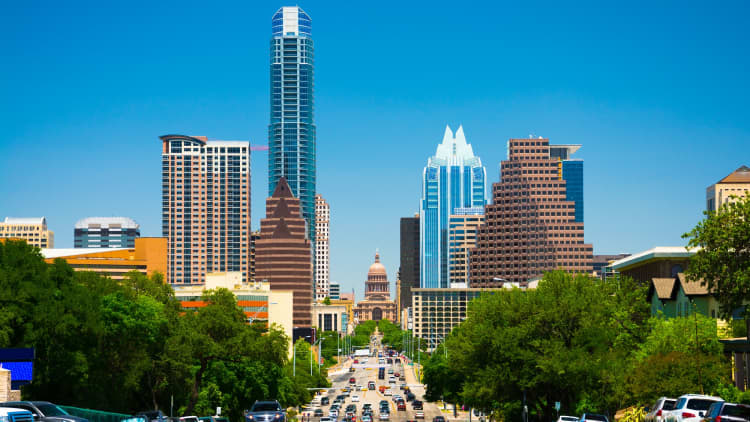Coronavirus infection rates are spiking to new highs in several metropolitan areas and smaller communities across the country, according to undisclosed data the White House's pandemic task force is using to track rates of infection, which was obtained by NBC News.
The data contained in a May 7 coronavirus task force report are at odds with President Donald Trump's Monday declaration that "all throughout the country, the numbers are coming down rapidly."
The top 10 areas saw surges of 72.4 percent or greater over a seven-day period compared to the prior week, according to a set of tables produced for the task force by its Data and Analytics unit. They include Nashville, Tennessee; Des Moines, Iowa; Amarillo, Texas; and — atop the list with a 650 percent increase — Central City, Kentucky.
On a separate list of "locations to watch," which didn't meet the precise criteria for the first set: Charlotte, North Carolina; Kansas City, Missouri; Omaha and Lincoln, Nebraska; Minneapolis, Minnesota; Montgomery, Alabama; Columbus, Ohio; and Phoenix, Arizona. The rate of new cases in Charlotte and Kansas City represented an increase of more than 200 percent over the prior week, and other tables included in the data show clusters in neighboring counties that don't form a geographic area on their own, like Wisconsin's Kenosha and Racine counties, which neighbor each other between Chicago and Milwaukee.

So far, more than 80,000 people in the U.S. have died because of the coronavirus, and the rate of new cases overall has not yet subsided. The Centers for Disease Control and Prevention reported that there were 23,792 new cases on May 10 — lower than the number for each of the previous four days but more than on May 4 and May 5.
The spiking infection rates suggest that the pandemic is spreading quickly outside major coastal population centers that were early hot spots, while governors of some of the states that are home to new hot spots are following Trump's advice to relax stay-at-home restrictions.
Missouri, Kentucky, Alabama, Iowa, Nebraska and Tennessee, for example, have no stay-at-home orders, according to a task force map. In other states where restrictions are being put in place or repealed at the local level, some counties are experiencing surges. Dallas and Fort Bend counties in Texas, where decisions are made locally, are on a "locations to watch" list because they have seen an increase in the number of cases of 116.8 percent and 64.8 percent, respectively.
On Monday, Senate Majority Leader Mitch McConnell, R-Ky., whose state included the nation's highest-surging geographic area, said he has "felt no urgency" for Congress to approve another coronavirus response bill.


